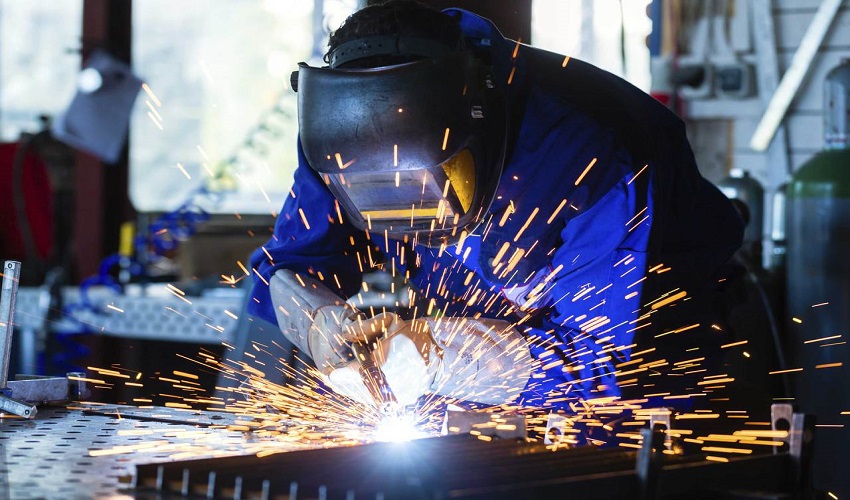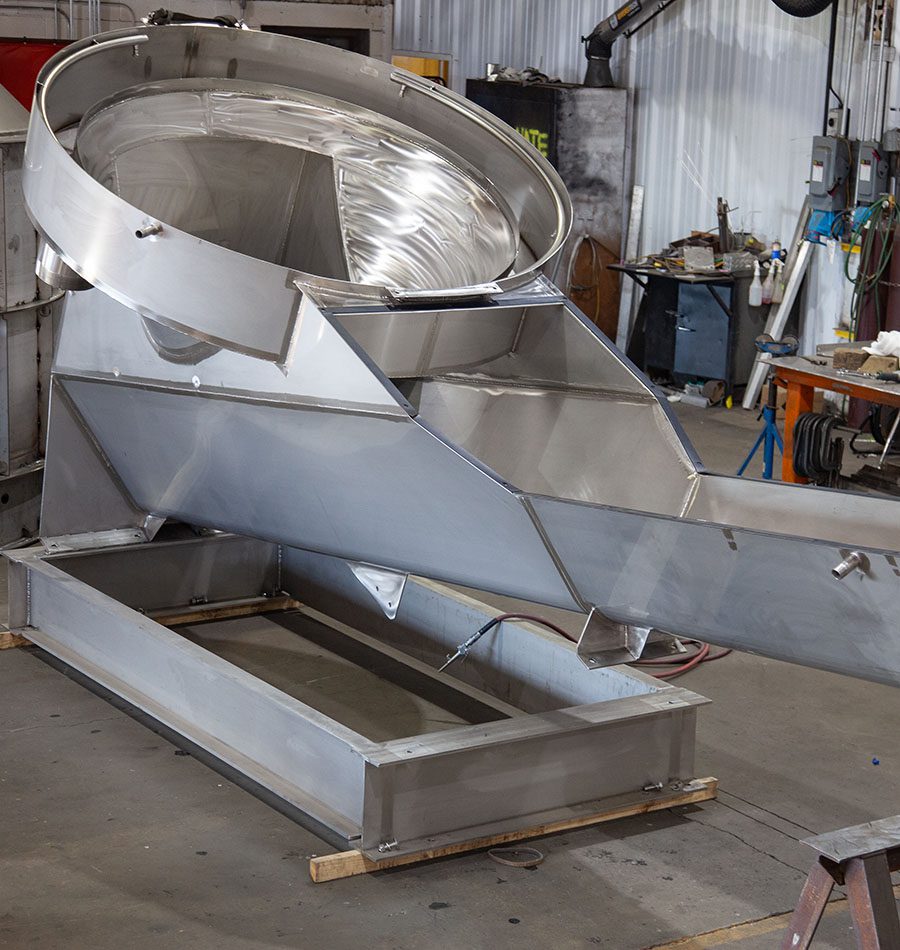Comprehensive Evaluation of Cutting-Edge Techniques in Steel Construction Industry
As the steel fabrication industry continues to progress, the assimilation of cutting-edge methods has actually come to be essential for staying competitive and meeting the demands of contemporary production criteria. In this vibrant sector where technology plays a critical function, comprehending the nuances of these innovative methods is not simply an alternative yet a need for those looking to build in advance in the ever-evolving globe of steel manufacture.
Laser Reducing Innovations
In the world of steel manufacture, laser reducing improvements have actually reinvented the accuracy and effectiveness of steel shaping processes. By utilizing the power of concentrated laser beams, manufacturers can now accomplish unmatched degrees of precision when cutting via various types of metals. This modern technology makes it possible for complex designs to be performed with very little product waste, making it a cost-effective remedy for sectors requiring high accuracy parts.
Among the vital advantages of laser cutting is its capability to manage a wide variety of materials, including stainless steel, light weight aluminum, and carbon steel, easily. The process creates tidy, burr-free sides, eliminating the need for extra completing steps. The non-contact nature of laser reducing minimizes the danger of material contamination, resulting in greater quality end products.
Additionally, laser reducing makers can be configured to make swift, specific cuts, substantially reducing production time compared to typical reducing methods. This speed and precision make laser reducing especially appropriate for mass production atmospheres where efficiency is paramount. As modern technology remains to advance, laser cutting is poised to play a significantly vital function in the steel manufacture sector.

CNC Machining Innovations
The advancement of CNC machining technologies has actually introduced a brand-new period of precision and effectiveness in the steel manufacture industry. Computer Numerical Control (CNC) devices have revolutionized steel fabrication by offering unrivaled precision and repeatability in the production process. steel fabrication melbourne. One of the key developments in CNC machining is the integration of sophisticated software program systems that allow real-time monitoring and adjustments, bring about improved productivity and quality assurance
Furthermore, the growth of multi-axis CNC equipments has permitted the construction of complicated steel elements with detailed styles that were previously testing to create. These equipments can carry out a vast array of machining procedures, consisting of milling, boring, transforming, and grinding, all with high levels of precision.
Furthermore, the unification of automation and robotics in CNC machining has streamlined production processes, lowered preparations, and decreased the margin of error. This integration of sophisticated modern technologies not just increases effectiveness however additionally ensures consistent top quality across all produced steel components. To conclude, CNC machining developments remain to drive advancements in the steel construction industry, setting brand-new standards for precision and efficiency.
Automated Welding Technologies
Automated welding modern technologies have actually revolutionized the steel construction market, improving performance and precision in the welding procedure. These cutting-edge modern technologies make use of computer-controlled systems to automate the welding process, bring about greater productivity degrees and improved weld high quality. One of the crucial benefits of automated welding is the capability to perform complicated welds with regular precision, minimizing the probability of errors and remodel.
Robotic welding systems are at the center of automated welding you can try these out innovations, providing exceptional speed and precision. These systems can handle a wide array of welding jobs, from basic to intricate, easily (Alpha reo). By utilizing sophisticated sensing units and software application, robot welders can adjust to variants in material and joint geometry, making sure an attire and reliable weld
Additionally, automated welding technologies boost workplace security by reducing the direct exposure of human welders to dangerous fumes and intense warmth. As the steel construction market continues to develop, integrating automated welding technologies will certainly be essential for companies wanting to stay affordable and fulfill the expanding needs for premium bonded items.
Robotics Integration in Construction
Using robot systems in construction processes has actually come to be a critical method for improving performance and accuracy in contemporary manufacturing atmospheres. Robotics integration in steel fabrication provides a myriad of benefits, consisting of boosted productivity, boosted quality control, and improved safety and security measures. These advanced robot systems are outfitted with sophisticated sensors and programming capabilities, permitting this page them to execute elaborate jobs with a high degree of precision and repeatability.
Among the vital benefits of robotics assimilation in steel fabrication is the capability to automate repeated jobs, such as product handling, cutting, welding, and setting up processes. This not only quickens manufacturing cycles but also lowers the threat of human mistake, resulting in greater total product quality. Additionally, robots can run 24/7, dramatically boosting manufacturing outcome and meeting tight project due dates.

3D Printing in Steel Manufacturing
Having actually reinvented the steel fabrication market through robotics combination, the blossoming exploration of 3D printing in steel manufacturing is poised to more advance the realm of modern-day production techniques. 3D printing, additionally recognized as additive production, uses extraordinary style liberty and intricacy, enabling the production of complex steel frameworks that were formerly unattainable via standard production approaches. By utilizing computer-aided design (CAD) software program, manufacturers can specifically manage the layer-by-layer deposition of steel product, causing components with enhanced functionalities and geometries.
One of the essential advantages of 3D printing in steel manufacturing is its ability to minimize product waste significantly. Unlike subtractive production processes where excess product is cut away, 3D printing just uses the essential amount of steel required for the final component. This effectiveness not only brings about cost financial savings however likewise straightens with sustainable manufacturing techniques by decreasing environmental effect.
Additionally, 3D printing enables rapid prototyping and important site modification, enabling the production of little sets of complicated steel elements with short preparations. As the modern technology proceeds to grow and become a lot more obtainable, its assimilation right into mainstream steel construction processes is expected to drive technology and efficiency throughout the market.
Conclusion
In conclusion, the steel construction industry has actually seen substantial innovations in strategies such as laser cutting, CNC machining, automated welding, robotics integration, and 3D printing. These innovative technologies have actually changed the means steel products are manufactured, leading to increased accuracy, effectiveness, and cost-effectiveness. Proceeded investment in these cutting-edge techniques is crucial for the market to stay affordable and satisfy the needs of contemporary manufacturing processes.
As the steel construction industry continues to progress, the combination of cutting-edge techniques has actually come to be essential for remaining affordable and meeting the demands of modern production criteria.One of the crucial benefits of laser cutting is its ability to deal with a vast variety of materials, including stainless steel, light weight aluminum, and carbon steel, with ease.Automated welding modern technologies have actually changed the steel fabrication sector, enhancing effectiveness and accuracy in the welding process.Having actually transformed the steel manufacture market via robotics integration, the expanding expedition of 3D printing in steel manufacturing is poised to more breakthrough the world of contemporary manufacturing techniques.In verdict, the steel manufacture sector has actually seen considerable advancements in methods such as laser cutting, CNC machining, automated welding, robotics integration, and 3D printing.